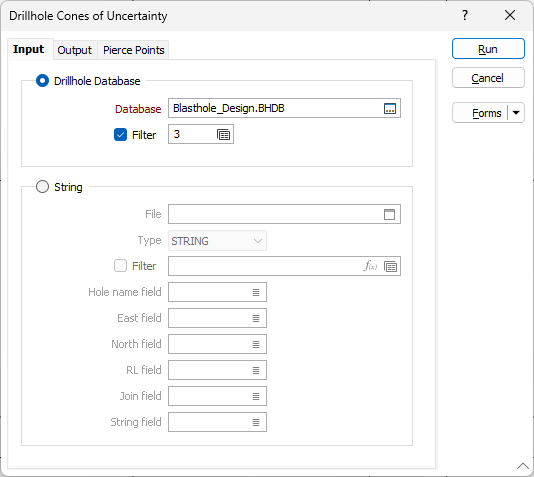Drillhole Cones of Uncertainty
When designing underground stopes, tunnels and shafts, it is often necessary to assess whether the voids created by these underground workings are likely to intersect drillholes. This exercise could be used to indicate the risk of rifling causes by such intersections, and/or to assess (where the holes might be, not where they are actually plotted given) historical data of downhole surveys which often possess a level of uncertainty.
![]()
The Drillhole Cones of Uncertainty form is used to generate data models based on a wireframe set and any specified pierce points.

The Input tab provides the option to select a drillhole database or define a string from a file which represent drillhole locations.
The
On the
Rifling risk profiling can also be configured by writing risk labels to a field on the output wireframe type. In addition, colours can be selected to distinguish drillhole solid cones which indicate high or low risk levels. You can also identify solids which you have flagged and categorised as "backfilled solid" in the input solids being evaluated.